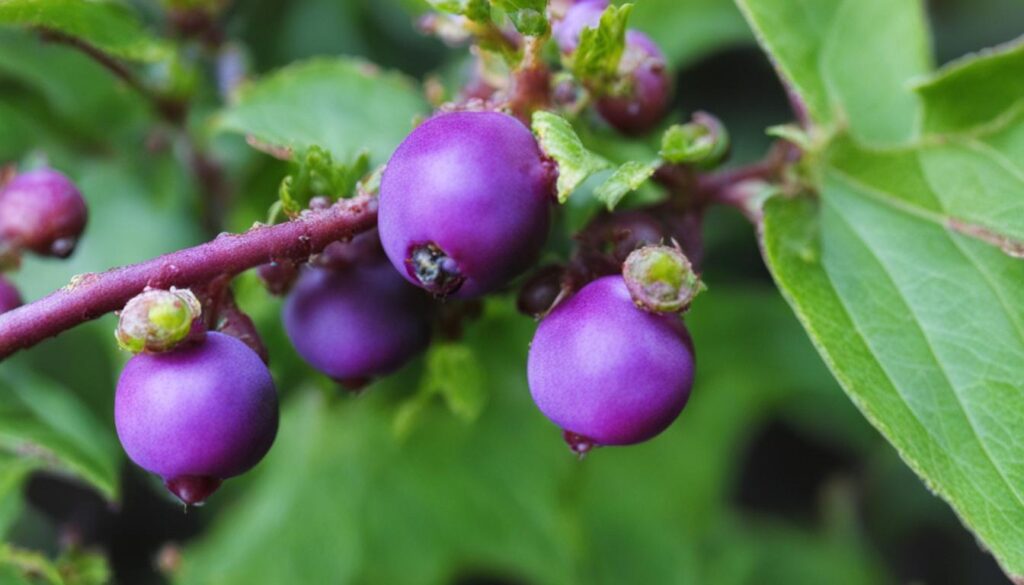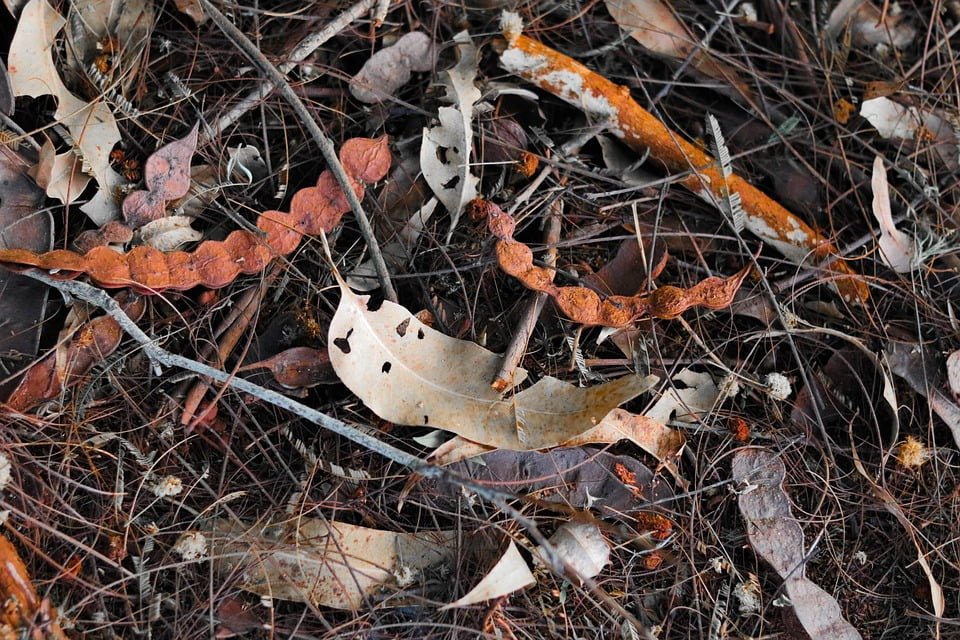Welcome to our comprehensive guide on the plant with purple berries! In this article, we will cover everything you need to know about how to identify, grow, and care for these enchanting plants. Whether you’re a seasoned gardener or just starting out, you’ll find valuable information that will help you successfully cultivate and enjoy these stunning additions to your garden.
The plant we will be focusing on is Callicarpa dichotoma, commonly known as Purple Beautyberry. Originating from China, Korea, and Japan, this deciduous shrub boasts clusters of small, pink to lavender flowers in the summer, followed by vibrant lilac-violet fruits that persist throughout the winter. Its elliptic green leaves turn golden-yellow in the fall, adding a stunning display of colors to your garden.
Callicarpa dichotoma is relatively easy to grow, reaching a height of 3-4 ft. (90-120 cm) and a width of 3-5 ft. (90-150 cm). It thrives in full sun to part shade and prefers well-drained, fertile soil. With its low maintenance requirements and resistance to pests and diseases, this plant makes for a hassle-free addition to any garden.
Not only is Callicarpa dichotoma visually captivating, but it also attracts bees, butterflies, and birds, making it a wildlife-friendly choice. Its vibrant berries add color and interest to any landscape, making it an excellent option for mixed shrub borders, containers, foundation plantings, and even as a specimen plant or deciduous hedge or screen.
So, whether you’re looking to identify, grow, or care for a plant with purple berries, this guide has you covered. Let’s dive in and discover everything you need to know about these captivating plants!
How to Identify a Plant With Purple Berries
To identify a plant with purple berries, look for distinctive characteristics. Callicarpa dichotoma, or Purple Beautyberry, is a compact deciduous shrub with a dense mounding habit. Its long arching branches create a cascading or weeping effect. The plant produces small, pink to lavender flowers along the stems in the summer, followed by clusters of luminous lilac-violet fruits in late summer. The elliptic green leaves turn golden-yellow in the fall. This plant is known for its berries, which remain on the shrub even after the leaves have fallen. It blooms on new growth, so prune the stems back to 6 inches (15 cm) in late winter to early spring to encourage compactness and flowering.
How to Grow and Care for a Plant With Purple Berries
Growing and caring for a plant with purple berries, such as Callicarpa dichotoma, is relatively easy. This species prefers full sun to part shade, allowing it to thrive in a variety of lighting conditions. When selecting the ideal location for your plant, ensure it receives adequate sunlight throughout the day.
Callicarpa dichotoma is adaptable to different soil types, but it thrives best in well-drained soil with good fertility. Prior to planting, prepare the soil by incorporating organic matter such as compost to improve its nutrient content and drainage. This will provide a conducive environment for the plant’s growth.
While the plant exhibits some drought tolerance, regular watering is crucial for optimal growth and to ensure the berries develop fully. Water the plant deeply, allowing the water to reach the root zone. Mulching can help retain soil moisture and minimize weed growth.
One of the remarkable aspects of Callicarpa dichotoma is its low maintenance nature. The plant typically requires minimal pruning and is not commonly affected by pests or diseases. This makes it an attractive choice for gardeners seeking a hassle-free plant to grow and care for.
To promote fruit production, it is recommended to plant Callicarpa dichotoma in groups or masses. This encourages cross-pollination and enhances the chances of abundant and vibrant berries on the shrub. Additionally, clustered plantings create a visually stunning display in your garden.
Callicarpa dichotoma offers a range of versatile uses in your landscape. It can be incorporated into mixed shrub borders, where the purple berries add a pop of color and visual interest. The plant also thrives in containers, allowing you to create captivating arrangements on your patio or deck.
With its lush foliage and cascading branches, Callicarpa dichotoma can be used as a foundation planting, providing an elegant backdrop for other garden elements. Moreover, it can be positioned as a specimen plant to create a focal point or as a deciduous hedge or screen to enhance privacy and aesthetic appeal.
Overall, growing and caring for a plant with purple berries like Callicarpa dichotoma is an enjoyable endeavor. Its adaptability to various soil types, low maintenance needs, and versatility in landscape applications make it an excellent choice for gardeners of all skill levels.
Conclusion
In conclusion, incorporating a plant with purple berries into your garden, such as the Callicarpa dichotoma, also known as Purple Beautyberry, can bring a touch of enchantment and beauty to your outdoor space. Its vibrant lilac-violet fruits and cascading branches add a pop of color and visual interest to the landscape.
One of the notable advantages of this plant is its ease of growth and low maintenance requirements, making it an excellent choice for both seasoned gardeners and beginners. Its ability to thrive in various soil types and adaptability to different light conditions make it a versatile addition to any garden.
The beautyberry shrub not only adds aesthetic appeal but also attracts essential pollinators such as bees, butterflies, and birds, contributing to the ecological balance of your garden. Whether planted in mixed shrub borders, containers, or used as an accent plant, the plant with purple berries is sure to bring elegance and charm to your outdoor space.
Can the Plant With Purple Berries be Easily Misidentified as a Different Plant?
The ability to identify plants with 5 leaves is crucial in distinguishing between similar-looking species. Without proper knowledge, a plant with purple berries could be misidentified as a different plant. It is important to carefully observe and research before jumping to conclusions about a plant’s identity.










